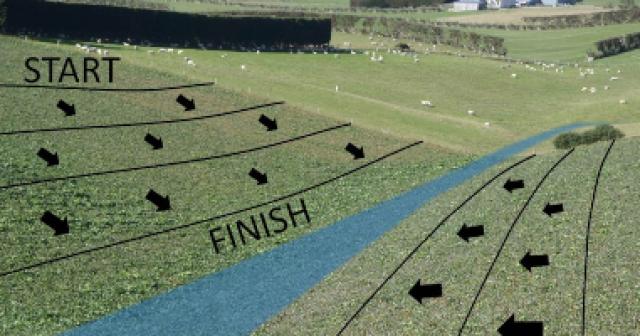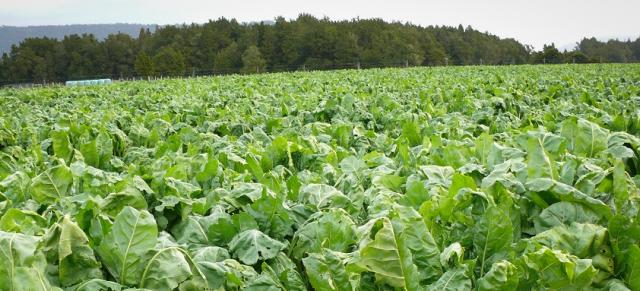Careful planning for winter allows you to winter animals in a way that ensures the highest standards of animal welfare are maintained and environmental risks are mitigated.

When planning for winter, careful thought needs to be given to:
1. Paddock/Grazing Management
When you’re standing at the gate considering how best to feed your crop, here are some factors to consider:
- Feed planning – how many animals will this crop feed and for how long. Consider using the B+LNZ FeedSmart app. This app brings together a raft of variables to give farmers instant information on: the nutritional requirements of different classes of livestock, feed values and feed allocation. This app is especially helpful to estimate the feed requirements for sheep and cattle at any time of the year and to help estimate the allocation of your winter crop. To find out more go to: www.feedsmart.co.nz
- Exclude stock from waterways and critical source areas (CSAs) – create an ungrazed (preferably uncropped) buffer zone of crop between the livestock and any waterways (at least 5 metres), but this should increase with slope and soil type risk. Identify areas that might channel overland flow (Critical Source Areas or CSAs) of soil nutrients and fecal matter to water, fence these areas off during grazing to reduce the risk of contaminating waterways. CSA’s can be grazed quickly and lightly when soil and weather conditions allow. Check your regional councils’ rules and regulations because some have rules on buffer zones.
- Trough placement and supplementary feeding – consider portable troughs that you can move with breaks for stock drinking water to help keep stock away from CSAs and to reduce soil damage. Supplementary feeding (hay and baleage) needs to be placed away from CSAs, waterways and ideally fed in drier parts of the paddock. Supplementary feed should be put into the paddock prior to grazing. This will help limit stock movement and heavy vehicles on wet soils, helping to reduce damage to the crop and soil.
2. Strategic Grazing
- Fence placement – on a sloping paddock, fence across the slope and start grazing at the top of the paddock, so the standing crop acts as a filter. Or, if there is a waterway present, start grazing at the opposite end of the paddock to the waterway.
- Make breaks “long and narrow”– research shows that the crop will be utilised more efficiently by cattle.
- Back fence– Regularly back fence stock off grazed breaks to help minimise pugging damage and reduce run off risk.
- Matching stock to the paddock and crop – consider using high-risk paddocks for grazing of lighter stock (sheep) while lower risk paddocks can be used for grazing heavier stock (cattle) or deer.
- Animal welfare – is there appropriate shelter and somewhere to lie down? If necessary use a stand off area or otherwise provide temporary bedding to allow stock the opportunity to lie and rest on firm, dry ground.

Relevant resources
The following resources are relevant to all livestock farmers – dairy, beef, sheep and deer – who graze pasture or crops intensively over winter. If you would prefer face to face guidance on these or other environmental issues, you can attend one of B+LNZ's Forage Cropping or Farm Plan workshops.
View the B+LNZ Events Calendar for upcoming dates.
- Why focus on wintering is important with Olivia Ross B+LNZ (Video)
- Environmental GMP & Regulation with Nick Tait Dairy NZ (Video)
- Planning winter for livestock - Helen Thoday Dairy NZ (Video)
- Paddock set-up & contingency plans with Dawn Dalley Dairy NZ & Olivia Ross B+LNZ (Video)
- Winter Forage Crops: management before grazing (PDF, 546KB)
- Strategic Grazing of Winter Crops (Video)
- Reducing surface runoff from grazed winter forage crop paddocks by strategic grazing management (PDF, 1.4MB)


